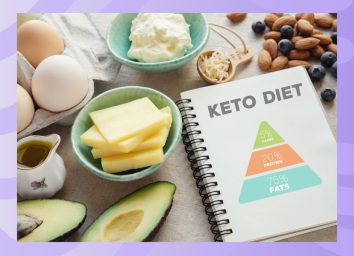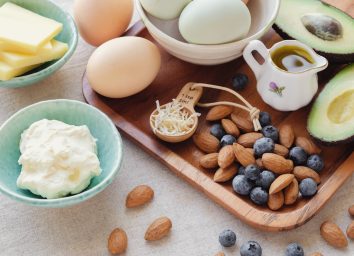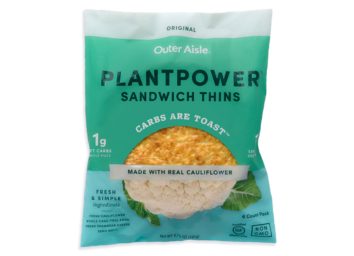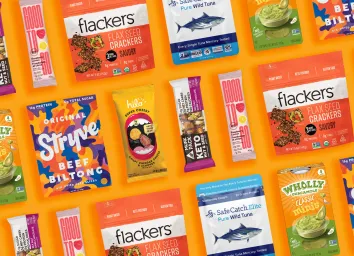What Is a Fat Fast and Is It a Safe Keto Shortcut?
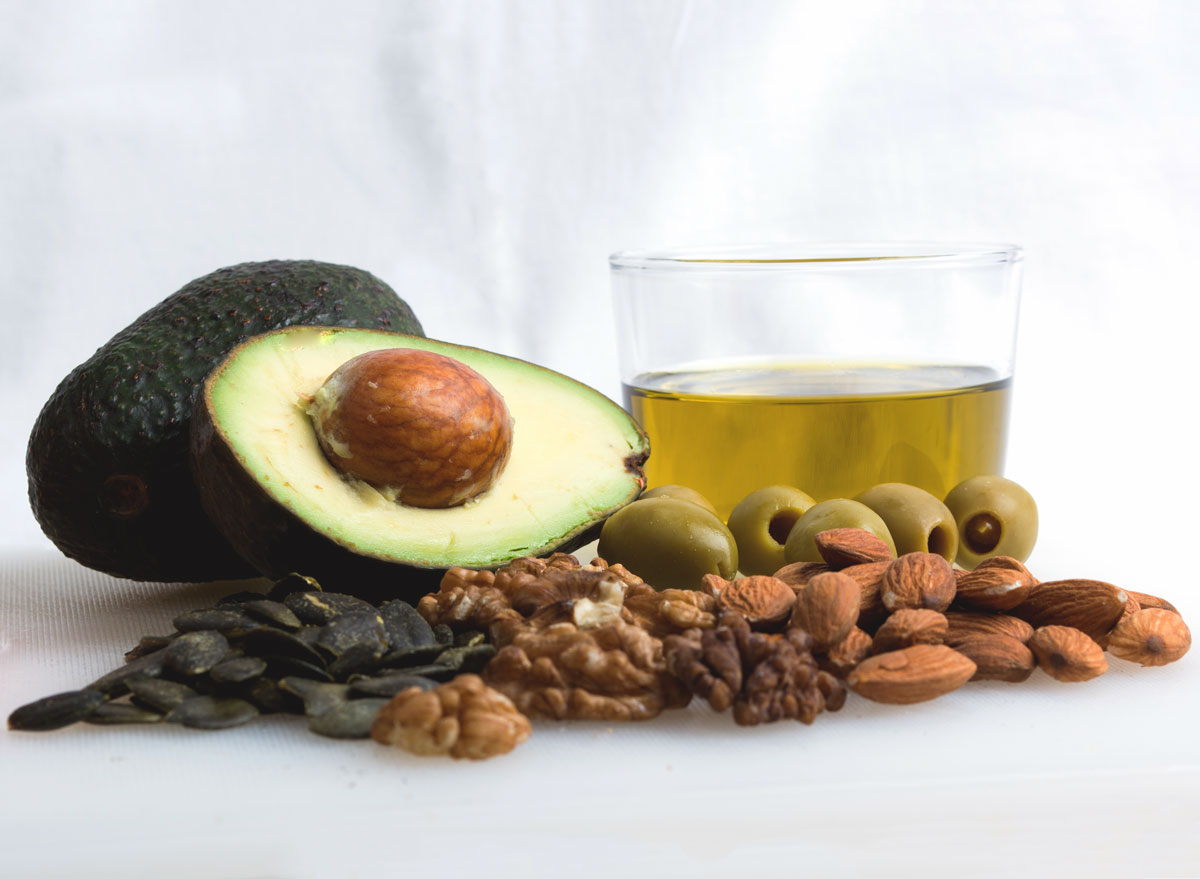
Turbo-charged focus. Banished sweet cravings. Reduced risk of common diseases like type 2 diabetes, obesity, and Alzheimer's. Increased weight loss. The purported benefits of the ketogenic diet, the high-fat, moderate-protein, very low-carb diet that's swept up the nation, sound pretty appetizing. Like, maple-bacon-donut level appetizing.
The problem? The first week of the diet as your body transitions into ketosis—which is when your body transitions from burning carbohydrates (or more specifically, glucose) for energy, to burning fat (or ketones) energy—are hell. "The nausea, fatigue, headache, feelings of weakness, diarrhea, and dizziness associated with this period of time is colloquially known as the keto flu," says registered dietitian Briana Rodriquez, RDN and Personal Trainer at Jenny Craig.
If you could bypass the keto flu and get right to the weight loss part of the keto diet, you would, right? Well, some folks say you might be able to, using something called a fat fast.
What is a fat fast, exactly?
A fat fast is basically a short-term keto diet on steroids. "It's a two- to five-day eating plan that involves limiting yourself to 1000 to 1200 calories per day, with 80 to 95 percent of those calories coming from fat," says Rodriquez. For a sense of just how much fat that is, the classic keto diet recommends that 60 to 75 percent of your calories come from fat. The theory behind fat fasting is that by eating so much fat and so little carbohydrates, you force your body into ketosis in a matter of days—as opposed to weeks.
Lisa Richards CNC, nutritionist and founder of The Candida Diet, adds that sometimes a fat fast can also be used by folks who took a cheat day on the keto diet (a day when more than 5 to 10 percent of their calories came from carbohydrates) to get their body back into ketosis more quickly. "It's also occasionally used by those who have hit a weight loss plateau and want to revamp their weight loss efforts."
What can you eat during a fat fast?
You guessed it: a lot of fat! The goal is to eat 4 to 5 small meals of 200 to 250 calories a day with foods like:
- Avocados
- Nuts and nut butters
- Oils such as coconut, mayo, olive, avocado
- High-fat dairy from butters, cream cheese, high-fat cheese
- Full-fat dairy alternatives, such as coconut milk and cream
- Very small amounts of high-fat proteins, like bacon
- Whole eggs and egg yolks
- Leafy greens cooked with fat
High-protein, moderate-fat foods like chicken breast, tuna, and salmon, and low-carb fruits and vegetables which are permitted (and encouraged!) during the classic keto diet are not allowed during a fat fast. "You are consuming such a large amount of fat, that you just don't have room in your diet for the other macronutrients," says Rodriquez.
And of course, because you're focusing on fats and going without carbs, big bowls of cereal and pasta, helpings of starchy veggies like potatoes and legumes, and sugary sweets are all off limits.
What are the benefits and drawbacks of fat fasting?
Fat fasting does what it claims to do: Depletes the body of carbohydrates to help you get into ketosis faster, and creates the calorie deficit necessary for weight loss.
But Rodriquez points out that there is no research showing that a fat fast is healthy, safe, or efficient. "And there's very good reason to believe that doing a fast for longer than the five recommended days could actually be dangerous." She says: "We need protein to support muscle mass and energy. Consuming as little protein as the fat fast recommends may actually result in unhealthy muscle loss, instead of the fat and weight loss most people are hoping for."
Further, fat fasting consists of very little or no veggies, no fiber, and no fruit. "Fat fasting forces people to miss out on essential micronutrients and antioxidants by following this form of restrictive eating," Rodriquez says. Miss out on these essential vitamins and minerals and you risk symptoms associated with malnutrition like nausea, dizziness, diarrhea, and fatigue—the very symptoms you were hoping to get away from by dodging the keto flu. Sigh.
While the diet may lead to short-term weight loss, Rodriquez notes that weight loss is not likely to last—for a few reasons. For starters, when you deplete your carbohydrate stores, you lose water weight which tricks people into thinking they're losing fat. "But you'll quickly regain that weight once some carbohydrates are allowed back in the picture," she says.
And, while the very low-calorie intake the diet prescribed will also lead to a lower number on the scale in five day's time, Rodriquez notes that most folks will gain all of this back as soon as they start eating an adequate number of calories. And lest you think that's a green light to keeping your calorie intake dancing around 1000, know that limiting your calories that severely can actually slow your metabolism and interfere with the very weight you're trying to lose, she says.
Bottom line: Should you try fat fasting?
Can the foods allowed on a fat fast be part of a healthy, sustainable, and safe diet? Yes! And can cutting out things like pastries, white pasta, and white breads be good for your overall health? Yes, again. But all-in-all Rodriquez says, "There's really no reason to do a fat fast."
"If you decide that following the high fat, moderate protein, low-carb keto lifestyle works for you, then great," she says. "But don't forgo nutrient-dense, protein-packed foods and overly-restrict your calories at the beginning of the diet."
Instead of doing a fat fast to get into keto to avoid the keto flu, Richards recommends gradually decreasing your carbohydrate intake while increasing your fat intake. "Easing into your keto journey at a slower pace and staying hydrated will help make you less miserable," she says.
